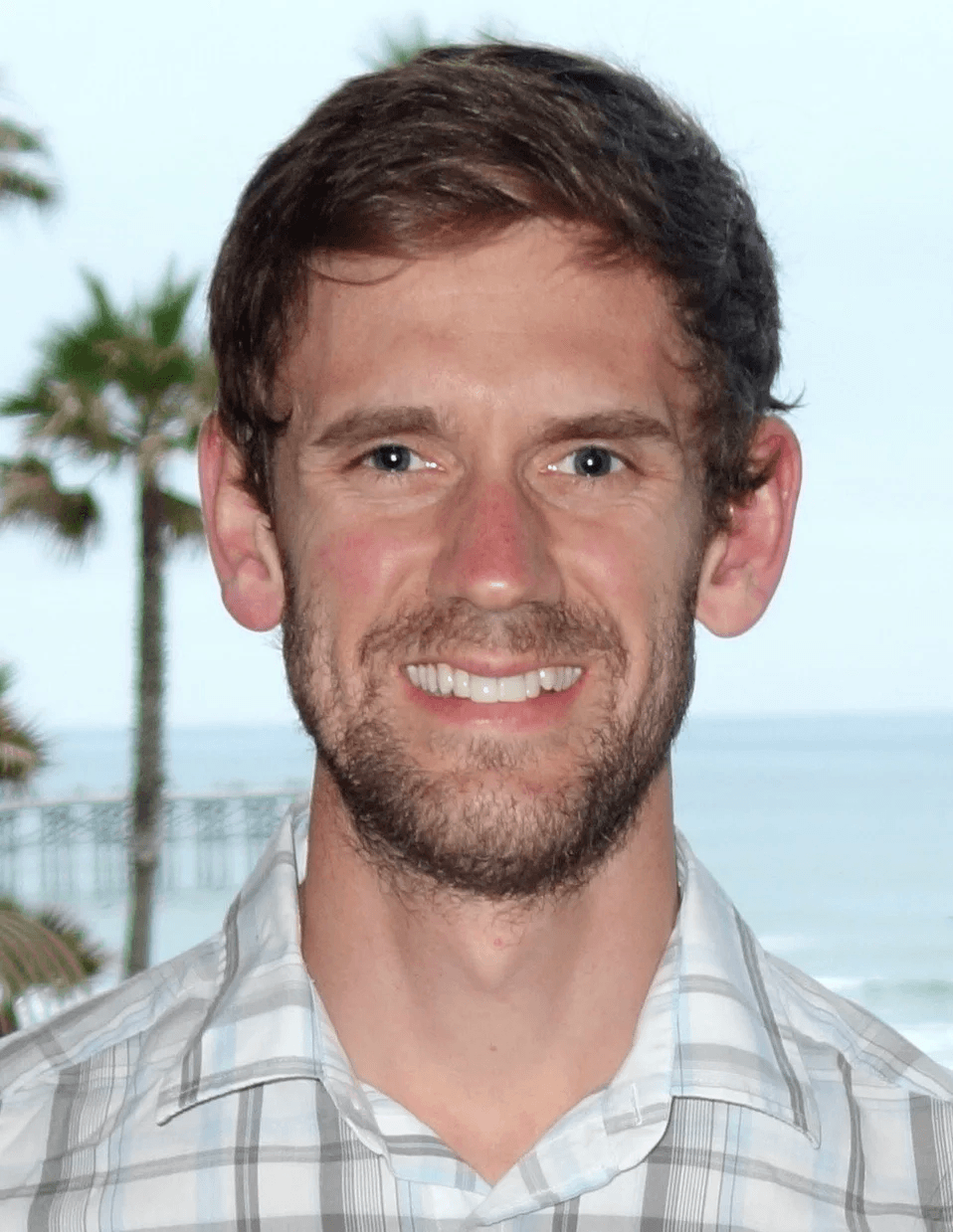How to Turn Goals into Daily Habits That Produce Results
MindsetABOUT THE AUTHOR

Phil White
Phil White is the co-author of Waterman 2.0 (with Dr. Kelly Starrett), The 17 Hour Fast (with Dr. Frank Merritt), Unplugged (with Dr. Andy Galpin and Brian Mackenzie) and Game Changer (with Fergus Connolly). He writes for Train Heroic, HANAH, Momentous, XPT, Onnit, StrongFirst, TRX, McGregor FAST, and other leaders in human performance. In a previous life, Phil was nominated for a screenwriting Emmy. He lives with his wife and two sons in the mountains of Colorado. Connect with Phil at www.philwhitebooks.com
‘Tis the season when gyms are full, clients are motivated, and coaches are pumped to help people achieve their New Year’s resolutions. Yet lurking in the background is a truth often left unsaid – that 84% of people abandon such resolutions before achieving them, and the same gyms that are busy in January and February are often half-empty again by April and May.
So what’s going on here? Why do we so regularly fail to follow through on seemingly noble aims that end up going nowhere?
Part of the problem is that even the word “goals” can become so touchy-feely that it’s no different from “hopes” or “dreams” – mere aspirations that in a perfect world you’d like to achieve, but probably won’t.
Also, setting resolutions before heading into a new year is beyond cliché at this point. If everyone were telling you about their targets for 2019, you probably felt compelled to set some of your own. But doing so from a place of obligation rather than intrinsic motivation really sets you up for failure. Nobody ever won an Olympic medal, came up with a world-changing invention, or left a legacy of positive change because they just went along with the herd.
My pastor at Flatirons Community Church, Jim Burgen, recently shared a message about the three steps needed for meaningful change: vision, intent, and strategy. It doesn’t matter if you’re a person of faith or not – you can see the wisdom in what Jim was trying to say. It’s all very well to envision a better you, or merely intend to do something. But, as the old adage goes, “The road to hell is paved with good intentions.” In order to actually reach a goal, you need a strategy for how to get there. Then you must implement this plan.
This is simplified by Jocko Willink and Leif Babin in their bestselling book Extreme Ownership as the principle of prioritize and execute. You might have the best ideas in the world and be perfectly capable of deciding which one is the most pressing. But if you don’t go out and actually do the thing, it’s just talk.
// Get SMART
Your Title Goes Here
Your content goes here. Edit or remove this text inline or in the module Content settings. You can also style every aspect of this content in the module Design settings and even apply custom CSS to this text in the module Advanced settings.
Specific
- Specific – What exactly are you going to achieve? So for example, if you’re a rower, simply saying, “I want to row faster” isn’t going to cut it. Clearly stating, “I want to row a 6:40 2K” is much better.
Measurable
- Measurable – What are a few simple data points you can use to track your progress and, if necessary, adjust the final goal?
Achievable
- Achievable – It has become cool to post aphorisms like “Anything is possible” on Instagram, but while we’re all in favor of positivity, it’s actually untrue. If you currently squat 200 pounds and want to hit 300 by the end of the year, go at it. Wanna bend the bar with 800 pounds? Probably not going to happen in 12 months.
Time-bound
- Time-bound – What’s the final deadline to achieve the goal, and what are some milestone dates along the way?
Relevant
- Relevant – Why do you want to hit this target and how, as my co-author Fergus Connolly says, will it affect the scoreboard on game day? Don’t pick some arbitrary goal, but one that will actually improve your overall performance or life.

// Who Are Your People?
Once you’ve tested the integrity of your goals by running them through the SMART filter, it’s time to start on the road to actually achieving them.
A lot of people use fitness trackers to monitor their progress, but research has shown that this kind of extrinsic motivation falls flat after a while, with one study concluding that people who used a wearable for a year didn’t improve their health any more than those who went device-free.
A better option? Get a friend or family member to keep you on the hook. If you know a friend is going to come to your house at 6 AM every Monday, Wednesday, and Friday to pick you up for a joint gym session, you’ll most likely shake off sleepiness and get your butt out the front door. Whereas when that alarm goes off and you’re going alone, that snooze button will seem so much more tempting.
As the old African poem goes, “If you want to go quickly, go alone. If you want to go far, go together.”
// Seek Out a Sensei
In The Karate Kid (the Ralph Macchio one, not the Jaden Smith version), our protagonist starts trying to solve his bullying problem by doing karate from a book. But unless you’re self-appointed jiu-jitsu black belt JP Sears, you can’t use a book or YouTube video to take a shortcut to your end goal. If Daniel had kept going down that path, Johnny would’ve kept kicking his ass. What he needed was the tutelage of Mr. Miyagi to guide him.
Same goes for you. Whether it’s in-person or virtually, a coach can provide the kind of expertise you need not only to obtain a specific goal, but also to develop complementary skills that will serve you well long after you’ve achieved it.
Going back to our squat example, an expert lifting coach won’t just help you pack pounds on the bar, but also help improve your movement quality, mechanics, programming, and recovery, all of which will mean far more in the long run than you being able to move more plates up and down. If you want to invest in yourself, pony up for some high-quality coaching.

// Sort Out Your Systems
Another way to make sure you don’t join the majority who quickly abandon their goals is to put systems in place to help you succeed. Yeah, I know I just took a shot at the limitations of wearable tech (which happens when you write a book called Unplugged), but certain technologies can help you outline and stick to your plan.
For example, the Train Heroic mobile app provides daily workouts and gives you a level of on-the-go accountability that can augment that of your teammates, friends, and so on. It’s a simple binary – did you do the work or didn’t you? If it’s the former more often than not, you’re much more likely to hit or even exceed the target you set.
And if you find yourself starting to slip (don’t do that!), then either ask your partner or coach to help. Or look to a master motivator like Jocko Willink to recapture your mojo.
// See Your Future, Be Your Future
In the clamor and chaos of our busy lives, it’s all too easy to let our goals recede in the rearview mirror as time goes on. To prevent this from happening, keep them front and center in a different kind of mirror.
Let’s hear from former Navy SEAL David Goggins, who knows a thing or two about ongoing motivation. “Digital devices won’t work. Write all your insecurities, dreams, and goals on Post-its and tag up your mirror,” Goggins writes in his book Can’t Hurt Me. “Each step, each necessary point of self-improvement, should be written on its own note. For example, if you’re trying to lose 40 pounds, your first Post-it may be to lose two pounds in the first week. Once that goal is achieved, remove the note and post the next goal of two to five pounds until your ultimate goal is realized.”
Such tactics didn’t just help Goggins go from a 297-pound “depressed, overweight young man with no future” into a shredded SEAL, Army Ranger, and Air Force Tactical Air Controller, but also powered him to become an endurance athlete Outside declared to be the “Fittest (Real) Man in America.” If visualization is good enough for Goggins, it’s good enough for you and me.
// Commit!
Are you in, or are you out? There’s no point in stating a goal and then pursuing it half-heartedly. That’s just a waste of your time. If you are going to summit the mountain (literally or metaphorically), having the right people, the best coaching, and the fanciest systems in place is going to help, but it’s not everything.
Simply put, nobody can do the work for you. It’s going to be on you to show up day after day and put in the effort. Then to get sufficient recovery so you can show up tomorrow and do it again. That’s going to take willpower, determination, and conviction. As Goggins writes, “I hope you’re ready. It’s time to go to war with yourself.”

Are you a better coach after reading this?
More coaches and athletes than ever are reading the TrainHeroic blog, and it’s our mission to support them with usefull training & coaching content. If you found this article useful, please take a moment to share it on social media, engage with the author, and link to this article on your own blog or any forums you post on.
Be Your Best,
TrainHeroic Content Team
HEROIC SOCIAL
HEROIC SOCIAL
TRAINING LAB
Access the latest articles, reviews, and case studies from the top strength and conditioning minds in the TH Training Lab

